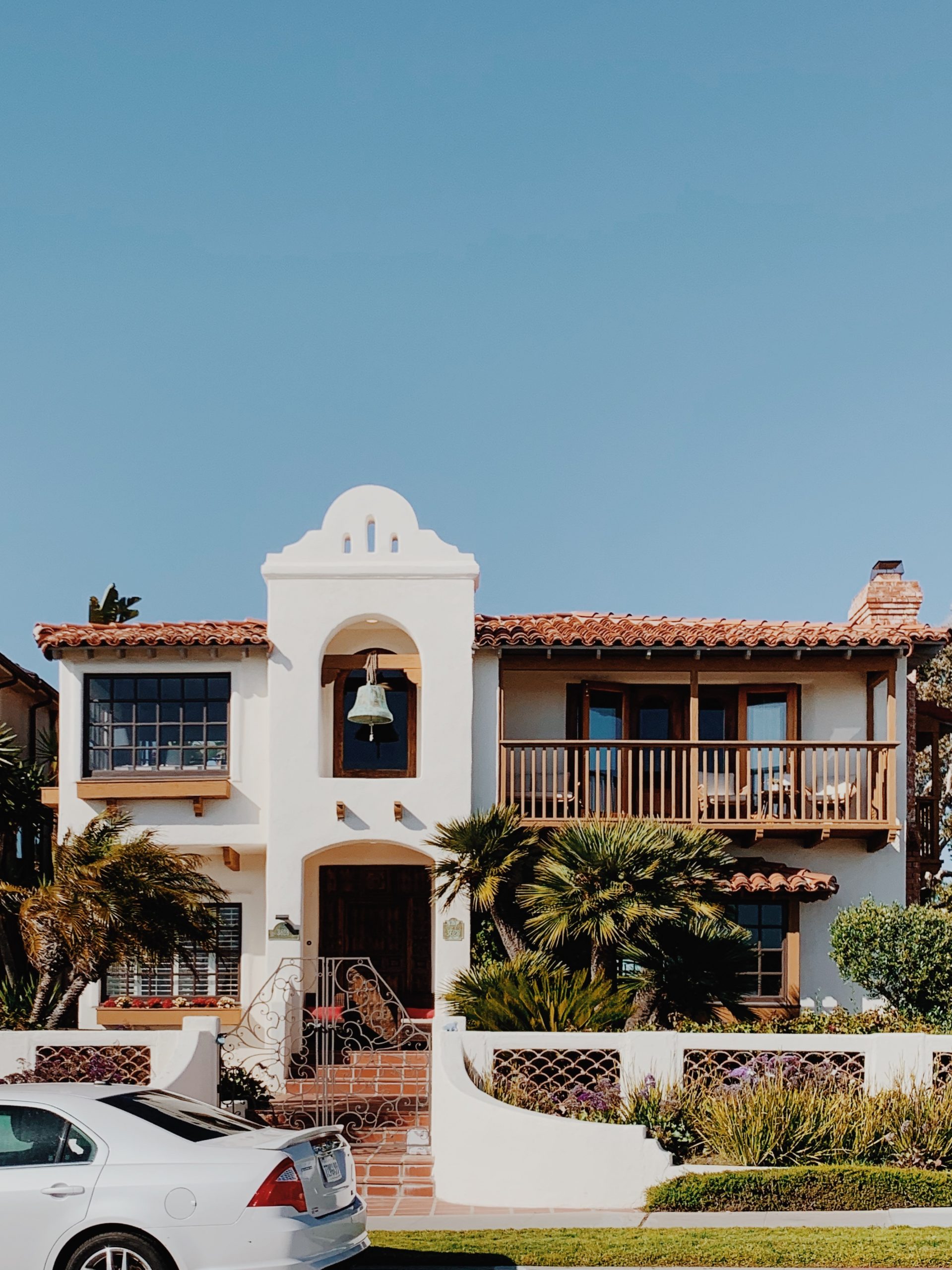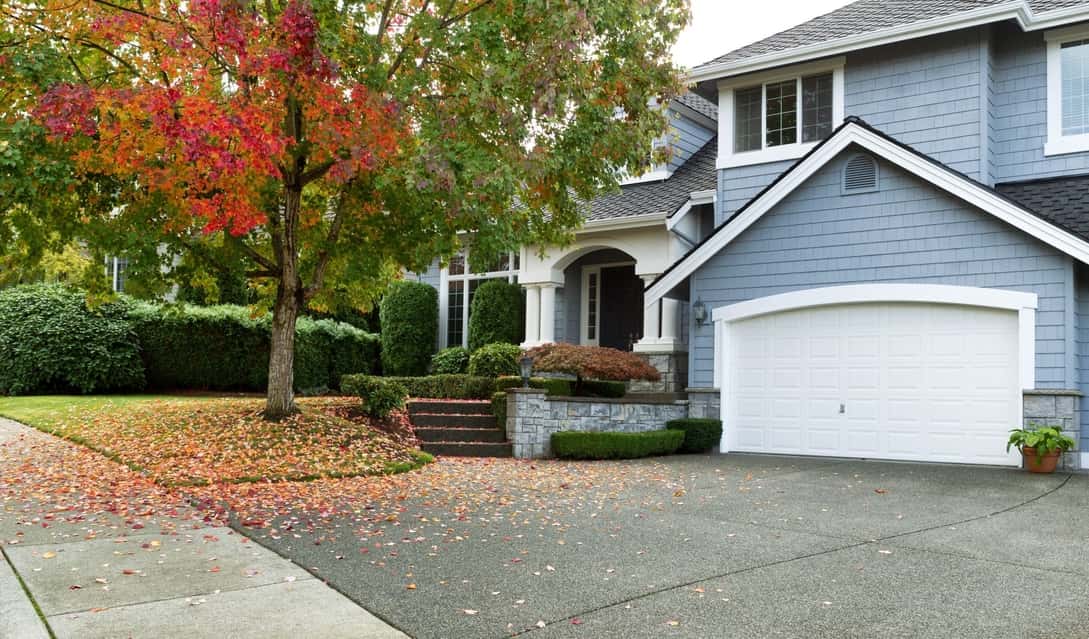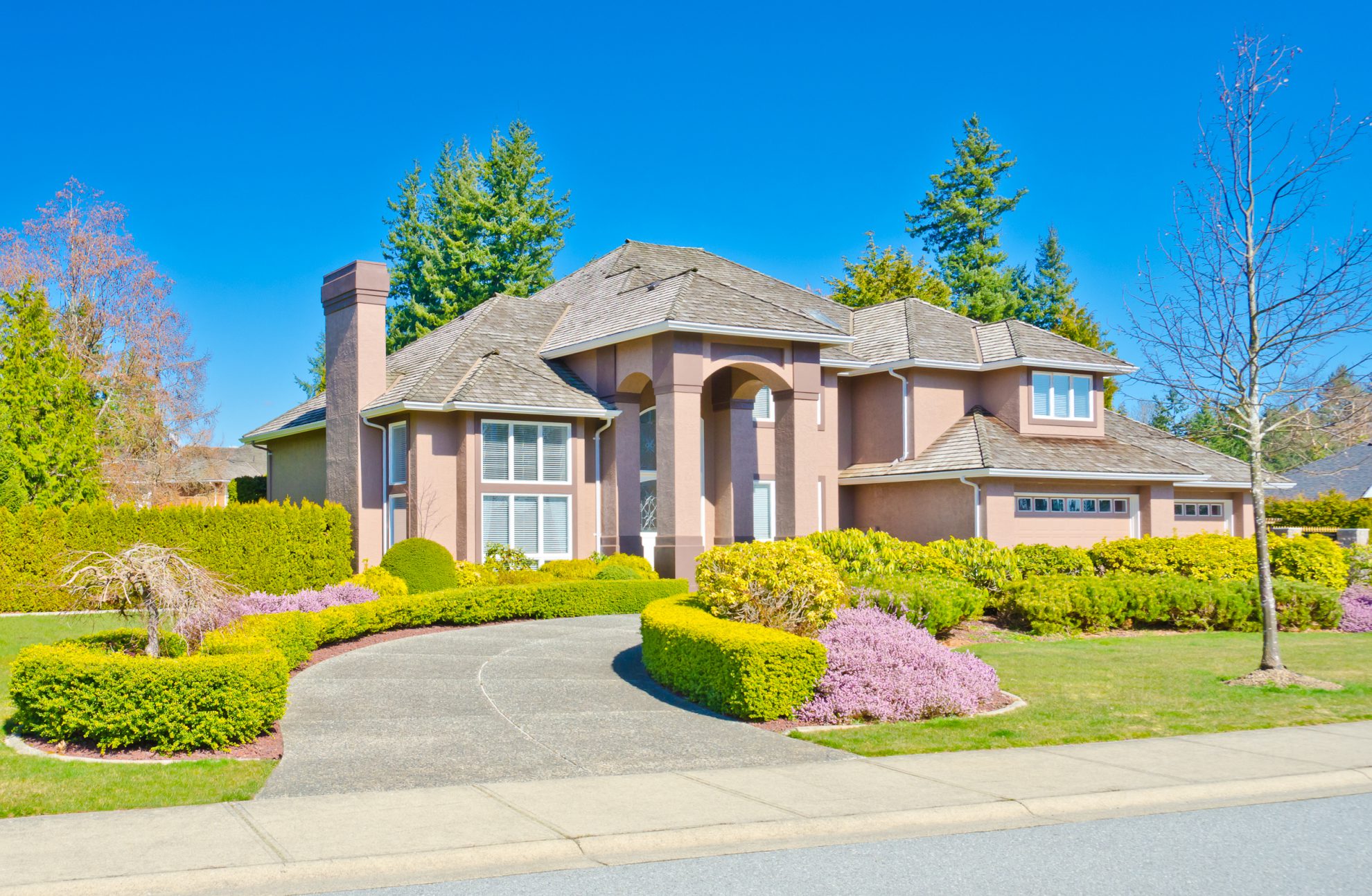Every home tells a story. From the bricks that lay its foundation to the shingles that crown its roof, each element weaves a narrative about the people who reside within its walls, the era it hails from, and the myriad cultural influences that have shaped its design. As we stroll through neighborhoods, the diverse Home Styles and Architectures we encounter are like pages from a vast, open book, chronicling the evolution of societies, technologies, and artistic sensibilities. This guide invites you on a journey, not just through different geographical terrains but also through time. Together, we’ll explore the rich tapestry of architectural designs that have left an indelible mark on our landscapes and imaginations. Let’s delve into the world of popular home styles and architectures, understanding their origins, characteristics, and the timeless appeal they hold.
Colonial
The Colonial style, with its roots deeply embedded in the early history of the United States, stands as a testament to the nation’s formative years. Originating in the 1600s, this architectural style was birthed during a time of exploration, settlement, and the forging of a new world. As settlers from various European countries arrived on American shores, they brought with them architectural preferences from their homelands. Over time, these designs were adapted to the local climate, materials, and the needs of a burgeoning society.
Central to the Colonial design is its emphasis on symmetry. A typical Colonial home presents a balanced facade, with a centrally located front door flanked by an equal number of windows on either side. This symmetry extends to the interior layout as well, often featuring rooms of equal size on either side of a central hallway.
The materials used in Colonial homes were largely influenced by the region. In the Northeast, for instance, brick and wood were abundant and became the primary building materials. In contrast, Southern Colonials might feature a more extensive use of limestone or even adobe in the Southwest.
Roofs of Colonial homes are steep, ensuring quick runoff of rain and snow, and often culminate in a central chimney, a vital feature for homes that relied on fireplaces for both cooking and heating. The interiors of these homes were functional and straightforward, with little room for excess. Rooms were multi-purpose, with the central space often serving as a gathering spot for family activities, dining, and even sleeping.
Over the years, as America grew and prospered, the Colonial style evolved, giving rise to sub-styles like the Georgian, Federal, and Dutch Colonial. Each of these brought subtle variations to the original design, reflecting the nuances of different regions and the influences of various European countries.
In essence, the Colonial style is more than just an architectural design. It’s a reflection of America’s early history, a melding of Old World charm with New World practicality, and a symbol of the resilience and adaptability of its early settlers.
Victorian
The Victorian era, spanning the 19th century, was a time of profound change, innovation, and expansion. It was an age marked by the Industrial Revolution, significant scientific discoveries, and a burgeoning middle class. This transformative period in history also left an indelible mark on the world of architecture, giving rise to the enchanting Victorian style homes that continue to captivate us today.
Named after Queen Victoria, who reigned over the British Empire from 1837 to 1901, the Victorian architectural style is as multifaceted as the era itself. It’s not just a single style but an amalgamation of various designs that emerged during this period, including Gothic Revival, Italianate, Second Empire, and Queen Anne, to name a few.
One of the defining characteristics of Victorian homes is their intricate detailing. At a time when new technologies made it possible to mass-produce ornamental elements, homes began to feature elaborate woodwork, decorative trims, and intricate patterns. These embellishments, often seen in the form of spindles, brackets, and gingerbread detailing, added a layer of visual complexity and charm to the structures.
Asymmetry is another hallmark of Victorian design. Unlike the balanced facades of Colonial homes, Victorian residences often boasted irregular shapes and floor plans. Turrets, bay windows, and overhanging eaves added depth and dimension to the exteriors. Steep, multi-faceted rooflines, often punctuated by dormer windows, further enhanced the dynamic silhouette of these homes.
Color played a pivotal role in Victorian architecture. With advancements in paint technology, a wider array of hues became available, leading to the creation of the so-called “Painted Ladies.” These homes, adorned in a palette of three or more contrasting colors, showcased the intricate details of the architecture in all their glory.
Inside a Victorian home, one would find high ceilings, ornate moldings, and spacious rooms. The interiors reflected the societal norms of the time, with separate rooms for different functions, symbolizing the compartmentalization of Victorian life. Parlors, drawing rooms, and formal dining areas were common, each adorned with its own set of furnishings and decor.
In essence, Victorian homes are a vivid representation of an era that celebrated individualism, artistry, and the myriad possibilities brought forth by industrialization. They stand as architectural masterpieces, each telling tales of a time when aesthetics and grandeur were intertwined with the very fabric of daily life.
Modern
The Modern architectural style, which began to take shape in the early to mid-20th century, was a radical departure from the traditional designs that preceded it. It emerged in a world that was rapidly changing, influenced by technological advancements, urbanization, and a shift in societal values. Modern architecture, with its emphasis on form following function, simplicity, and the elimination of unnecessary details, was a reflection of this new era and its forward-looking ethos.
At the heart of Modern design is the belief that a building should be a product of its time, reflecting the current realities and eschewing historical precedents. This philosophy led to the creation of structures that were starkly different from the ornate and historically influenced designs of the past. Instead of intricate detailing and embellishments, Modern homes showcased clean lines, unadorned surfaces, and a clear emphasis on geometric forms.
One of the defining features of Modern architecture is its innovative use of materials. Steel, glass, and reinforced concrete became the materials of choice, allowing architects to push the boundaries of design and create structures that were previously unimaginable. Large, expansive windows became a hallmark of Modern homes, not just as a design element, but also as a means to foster a deep connection between the indoors and the surrounding environment. These windows, often floor-to-ceiling, flooded interiors with natural light and offered unobstructed views of the landscape.
Open floor plans are another characteristic feature of Modern design. Walls were minimized, and spaces flowed seamlessly into one another, creating an environment that was airy and devoid of constraints. This open concept was a reflection of the changing societal dynamics, where rigid compartmentalization was giving way to more fluid and interactive living spaces.
The exteriors of Modern homes, devoid of unnecessary ornamentation, showcased the beauty of raw materials. Whether it was the sleek sheen of steel, the transparency of glass, or the rugged texture of concrete, each material was allowed to express its inherent qualities, adding to the overall aesthetic of the structure.
Sustainability and harmony with nature also became focal points in Modern design. Flat roofs, often used as terraces or gardens, integrated the building with its environment. Cantilevers, overhangs, and other architectural innovations not only added visual interest but also served functional purposes, like providing shade or directing rainwater.
In essence, Modern architecture is a testament to the human spirit’s adaptability, innovation, and relentless pursuit of progress. It’s a style that embraces change, challenges conventions, and seeks to create spaces that are in tune with the evolving needs and aspirations of its inhabitants. In a world that’s constantly in flux, Modern design stands as a beacon of clarity, simplicity, and timeless elegance.
Mediterranean
The Mediterranean architectural style, as the name suggests, draws its inspiration from the sun-drenched regions bordering the Mediterranean Sea. Countries like Spain, Italy, Greece, and even parts of North Africa have deeply influenced this style, resulting in homes that exude warmth, charm, and a timeless connection to ancient civilizations.
One of the most captivating aspects of Mediterranean design is its ability to evoke a sense of history and romance. These homes, with their characteristic red-tiled roofs, whitewashed or earth-toned stucco exteriors, and arched doorways, transport us to a world where the lines between indoor and outdoor living are beautifully blurred, and life unfolds at a leisurely pace.
The roofs of Mediterranean homes are often low-pitched and covered with terracotta or clay tiles. These tiles, baked under the relentless Mediterranean sun, not only add a rich texture and color to the structure but also serve a functional purpose. Their curved shape allows for better air circulation, keeping homes cooler during the scorching summer months.
Arches are a recurring motif in Mediterranean design. Whether it’s the grand entrance, windows, or interior doorways, the gentle curve of the arch is a nod to the Moorish and Byzantine influences that have left an indelible mark on the region’s architecture. These arches, combined with ornate wrought-iron details, wooden beams, and decorative tiles, add layers of visual interest and historical depth to the design.
The exteriors of Mediterranean homes often feature thick walls made of stucco, which serves a dual purpose. It provides insulation against the intense heat, and its reflective properties help keep the interiors cool. The color palette is typically drawn from the natural surroundings—earthy tones of beige, cream, and terracotta, punctuated occasionally by blues and greens that mirror the sea and the lush Mediterranean landscape.
Courtyards, patios, and balconies are integral to Mediterranean architecture. These outdoor spaces, often adorned with fountains, lush plants, and decorative tiles, serve as extensions of the living area. They are places of relaxation, entertainment, and communion with nature, reflecting the Mediterranean ethos of savoring life’s simple pleasures.
Inside a Mediterranean home, one can expect to find spacious rooms with high ceilings, often supported by wooden or exposed beams. Floors are typically made of terracotta tiles, cool to the touch and perfect for the warm climate. Ornamental details, like mosaic tiles, hand-painted ceramics, and intricate metalwork, infuse the interiors with character and authenticity.
In essence, Mediterranean architecture is a harmonious blend of form, function, and artistry. It’s a style that pays homage to the rich tapestry of cultures that have shaped the Mediterranean basin, offering a living experience that is both luxurious and deeply rooted in tradition.
Ranch
The Ranch style, also commonly referred to as the “Rambler,” is a uniquely American architectural design that emerged in the 1920s and soared in popularity during the post-World War II era of the 1950s and 60s. Born out of a desire for simplicity, functionality, and a connection to the sprawling landscapes of the American West, Ranch homes became synonymous with suburban living and the American dream of homeownership.
One of the defining characteristics of the Ranch style is its single-story design. Spread out horizontally, these homes embrace the land, sprawling gracefully across large lots. This horizontal emphasis is further accentuated by long, low rooflines and wide eaves. The design, devoid of the vertical constraints of multi-story structures, promotes a sense of freedom and openness, mirroring the vast expanses of the American frontier.
Ranch homes are often characterized by their L-shaped or U-shaped floor plans, which revolve around a central living area. This layout not only provides a clear demarcation of living spaces but also allows for easy access to outdoor areas, fostering a seamless integration of indoor and outdoor living. Patios, sunrooms, and sliding glass doors are common features, blurring the boundaries between the home’s interior and the surrounding landscape.
The exteriors of Ranch homes are typically clad in natural materials like brick, wood, or stucco. These materials, with their earthy tones and textures, enhance the home’s connection to its environment. Large windows, often placed strategically to capture natural light and views, further bridge the gap between the indoors and the outdoors.
Inside a Ranch home, one can expect to find an open floor plan, where living, dining, and kitchen areas flow into one another. This open concept, devoid of unnecessary walls and partitions, creates a sense of spaciousness and encourages family interaction and communal living. Fireplaces, often centrally located, serve as focal points, adding warmth and coziness to the living space.
Practicality and ease of movement are at the core of Ranch design. With all rooms on a single level, these homes are accessible and convenient, making them particularly appealing to both young families and older individuals. The absence of stairs also allows for a more fluid and flexible use of space, catering to the evolving needs of its inhabitants.
In essence, the Ranch style is a reflection of the American spirit unpretentious, pragmatic, and deeply connected to the land. It’s a design that celebrates the beauty of simplicity, the joy of family-centric living, and the timeless appeal of wide-open spaces. In a world that’s increasingly complex and chaotic, Ranch homes offer a sanctuary of serenity and groundedness.
Final Thought
In conclusion, the architectural styles of homes are not just mere designs or aesthetic choices; they are living narratives that capture the essence of different eras, cultures, and philosophies. Each style, from the historic charm of Colonial to the sprawling embrace of Ranch, tells a unique story of human evolution, societal values, and artistic expression. These homes are more than just brick and mortar; they are reflections of our collective aspirations, dreams, and the contexts in which we’ve lived.
As we walk through neighborhoods or travel across regions, these architectural marvels serve as tangible reminders of our shared history and the diverse tapestry of influences that have shaped our built environment. They remind us of the importance of preserving our architectural heritage while also adapting to the changing needs of modern living.
Furthermore, understanding these architectural styles enriches our appreciation of the spaces we inhabit and the environments we create. It encourages us to think deeply about the kind of legacy we want to leave behind and how our choices today will influence the architectural landscapes of tomorrow.
In a rapidly changing world, where skyscrapers touch the clouds and technology continually redefines boundaries, it’s comforting to know that our homes, irrespective of their style, remain steadfast symbols of safety, identity, and belonging. They stand as testaments to human creativity, resilience, and the eternal desire to carve out a space that we can truly call our own.









